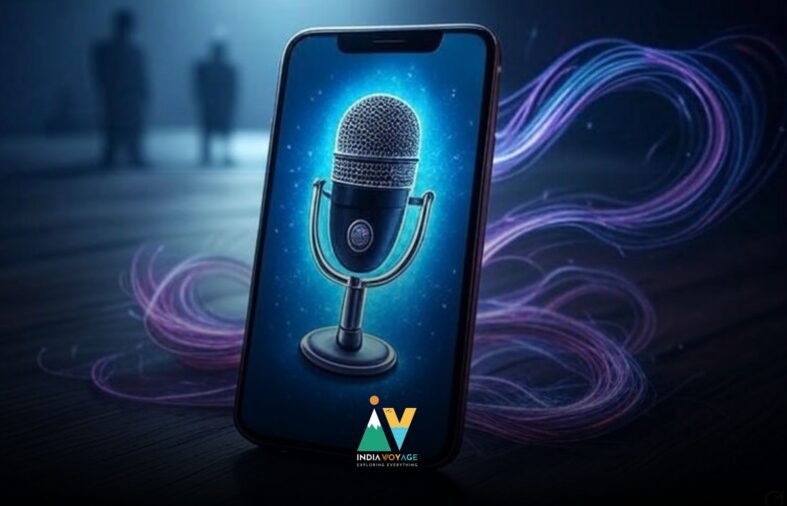Introduction
Smartphones are indispensable, but growing concerns about privacy have sparked questions: Are our phones secretly listening to our conversations? Many users notice ads for products they’ve only discussed verbally, fueling suspicions of unauthorized eavesdropping. This article delves into how smartphone listening functions, the potential threats to your safety, and actionable steps to safeguard your privacy while using your mobile device.
How Smartphones Might Listen
Smartphones come equipped with microphones that support features like voice calls, virtual assistants, and app functionalities. Below is an overview of how they could potentially “listen”:
- Voice Assistants and Trigger Phrases:
- Virtual assistants like Siri, Google Assistant, or Alexa are programmed to detect specific phrases (e.g., “Hey Siri,” “OK Google”). The microphone remains in a low-power state, using onboard chips to recognize these triggers. Upon detection, audio may be recorded and sent to servers for processing.
- While designed for convenience, this “always-on” listening capability raises concerns about unintended audio capture.
- App Permissions and Background Activity:
- Numerous apps, including social media, games, or productivity tools, request microphone access. If permitted, these apps might record audio during use or, in some cases, in the background, depending on the app’s permissions and the phone’s operating system.
- Research, such as a 2018 study by Northeastern University, found no solid proof of apps covertly recording without consent, but some apps could exploit permissions to capture audio snippets for purposes like ad targeting.
- Data Processing and Sharing:
- Audio captured by apps or assistants may be sent to cloud servers for analysis, such as refining voice recognition or tailoring advertisements. Companies like Google and Amazon have disclosed storing audio data (with user permission) to improve services, claiming it’s anonymized.
- Some apps share data with third parties, like advertisers, as highlighted in past controversies involving data misuse by platforms like Meta.
- Malware and Security Exploits:
- Malicious apps or spyware can bypass security to access microphones without user awareness. For instance, a 2020 cybersecurity report noted apps exploiting Android vulnerabilities to record audio covertly. Such risks are uncommon but significant, particularly on outdated devices.
Risks to Your Safety
Unauthorized microphone access can pose serious threats to your safety and privacy. Here are the primary dangers:
- Privacy Violations:
- Private conversations about sensitive topics—like finances, health, or personal matters—could be captured. For example, discussing a bank account near a phone with an active app might result in data being shared with advertisers or hackers.
- Targeted ads based on verbal conversations can feel intrusive, undermining trust in technology.
- Data Security Breaches:
- Audio stored on servers is susceptible to hacks. In 2019, reports revealed that some Alexa recordings were accessed by unauthorized personnel, raising concerns about data security.
- Surveillance and Tracking:
- Spyware, such as the Pegasus software exposed in 2021, can remotely activate microphones to monitor users’ locations or conversations. This is especially dangerous in cases of stalking or domestic abuse, where perpetrators could use audio to track victims.
- Extortion Risks:
- Hackers capturing sensitive audio could use it for blackmail, threatening to leak compromising information unless demands are met, endangering personal safety.
- Corporate or State Misuse:
- Companies might use audio data to manipulate consumer behavior or sell it to unregulated entities. In some regions, governments could demand access to audio, posing risks to activists or journalists.
Protecting Yourself: Practical Safety Measures
To minimize the risks of smartphone eavesdropping, adopt these strategies to secure your cellphone usage:
1. Control App Permissions
- How: On iOS, navigate to Settings > Privacy > Microphone to disable access for apps that don’t require it, like photo editors or games. On Android, go to Settings > Apps > Permissions > Microphone.
- Why: Restricting microphone access prevents apps from recording audio unnecessarily.
- Tip: Scrutinize apps from unknown developers and review their privacy policies before granting permissions.
2. Turn Off Always-Listening Features
- How: Disable voice assistant triggers like “Hey Siri” (Settings > Siri & Search on iOS) or “OK Google” (Google app > Settings > Google Assistant on Android).
- Why: This ensures the microphone isn’t active in the background, reducing the risk of unintended recordings.
- Tip: Activate assistants manually (e.g., via a button press) for controlled use.
3. Check for Microphone Use
- How: On iOS, an orange dot in the status bar signals microphone activity. On Android (12+), use the Privacy Dashboard (Settings > Privacy) to monitor recent microphone access.
- Why: These indicators help you spot unauthorized microphone use and take action, such as revoking permissions.
- Tip: Uninstall apps showing suspicious microphone activity and scan for malware.
4. Update Your Device Regularly
- How: Install operating system and app updates via Settings > General > Software Update (iOS) or Settings > System > Software Update (Android).
- Why: Updates fix vulnerabilities that could allow microphone access, protecting against exploits like those reported in 2020.
- Tip: Enable automatic updates for seamless protection.
5. Adopt Privacy Tools
- How: Use secure apps like Signal for communication or browsers like Brave that prioritize privacy. Consider physical microphone blockers for headphone jacks.
- Why: These tools limit data collection and block unauthorized microphone access.
- Tip: For high-stakes situations, use a device with minimal apps or a dedicated privacy phone.
6. Track Network Usage
- How: Install apps like GlassWire (Android) to monitor data uploads that might indicate audio transmission.
- Why: Excessive data or battery usage could signal covert recording, allowing you to investigate.
- Tip: Check apps with high data activity, especially those not requiring internet access for their primary function.
7. Take Physical Precautions
- How: During sensitive discussions, place your phone in another room, power it off, or use a Faraday bag to block signals.
- Why: Physically isolating the device prevents microphone activation during critical conversations.
- Tip: In cases of suspected surveillance (e.g., stalking), seek professional cybersecurity assistance.
8. Detect Spyware
- How: Run scans with trusted antivirus apps like Malwarebytes or Bitdefender to identify malicious apps accessing your microphone.
- Why: Spyware can secretly record audio, posing severe safety risks, especially for targeted individuals.
- Tip: Consult a cybersecurity expert if you suspect advanced surveillance like Pegasus.
Conclusion
While smartphones aren’t constantly eavesdropping, the potential for apps, malware, or features to misuse microphone access poses real threats to your privacy and safety. From data breaches to surveillance risks, the consequences can be severe. By controlling permissions, disabling always-on features, monitoring activity, and taking physical precautions, you can protect your conversations and personal information. Stay proactive, keep your device updated, and consider consulting cybersecurity resources for the latest insights on safeguarding your smartphone.
For concerns about specific apps or recent eavesdropping claims, explore reputable cybersecurity sources or seek expert advice tailored to your needs.











Leave A Reply